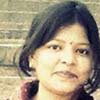Ganga was plain lucky, while the woes of the Varuna were pushed to the background
On a dry winter morning in December 2012, while crossing the bridge over what seemed like narrow waterway in an eastern UP town, I noticed a mountain of garbage in the stream. This shrunken, polluted and narrow stream was river Varuna. I, a cub reporter at that time, reported this to my editor and filed a story on the illegal garbage dumping on the riverbed. Authorities concerned behaved as if they were unaware of the practice. “No water body of any kind is being used for dumping garbage,” an official said. However, the reality belied their claims.
I spent some 2-3 days following the trucks that unloaded the garbage in the same area and across the length of the river in the outskirts of the town and collected photographs to support my report. The report was published -- and forgotten. The garbage continued to be dumped there. The river continued to shrink, while Ganga-- which the Varuna joins as a tributary-- started getting political attention during Lok Sabha polls. Ganga was plain lucky, while the woes of the Varuna were pushed to the background.
Recently, a fellow reporter from the area called me up to say that the riverbed down the stream has become a cricket pitch for village boys. I followed the local newspapers and found the river has dried up in several parts, including Prime Minister Narendra Modi’s parliamentary constituency Varanasi. I wasn’t shocked as I grown up seeing this independent, perennial river die of pollution, and construction on the riverbed.
The Varuna rises from Melhum at Phulpur in Allahabad and flows for 106-km, nourishing eastern UP districts like Bhadohi, Mirzapur, Jaunpur, and enters Varanasi in order to finally merge in the Ganga. The river was once rich for its fertile soil deposit and was known to nourish 90 villages situated on its bank.
However, over the years, the river had shrunk into a nullah carrying 60-MLD sewage from 14 drains every day. Apart from that, several open nullahs pour industrial and domestic waste in the river. In the last two decades, many private buildings including housing societies, private schools and individual homes were constructed on the riverbed, all under the nose of state government.
Hundreds of fishes were recently found dead on the banks of the river. In some areas, villagers looked for dead animals which they could eat. “We have never seen this river in its full fury. But this time, if you take an aerial view, patches of small ponds will be seen in its entire course,” says Anita Kumari, a women in Bhaodhi district.
Now the Akhilesh Yadav government is keen on making best use of the opportunity. While the Ganga found its protector, benefactor in prime minister Modi, the ailing Varuna has become a part of the pre-poll campaign for the Samajwadi Party ahead of the assembly elections in 2017.
The Samajwadi government is aiming to complete 13-year-old Varuna Corridor Project for the rejuvenation of the river. The state government made a provision of Rs 25 crore for the Varuna in its budget.
It is aiming to remove encroachment from the river bed and acquiring private land and buildings constructed on it. Under the same project, they are intending to bring fresh water into the river from Ganga through a channel and water level will be maintained by dredging. More importantly, they are also claiming to develop a green belt, roads, cycling zones, jogging parks and gardens in the stretch of the river that flows in Varanasi. Irrigation department is conducting a survey and has started sending notices to the illegal occupants of buildings on the riverbed. The target is to complete the project by the end of monsoon.
While the residents of Varanasi are praising the efforts of the state government, the villagers are only waiting for the river to flow in its full fury. For them, the river Varuna is their Ganga.

